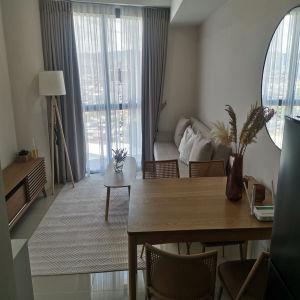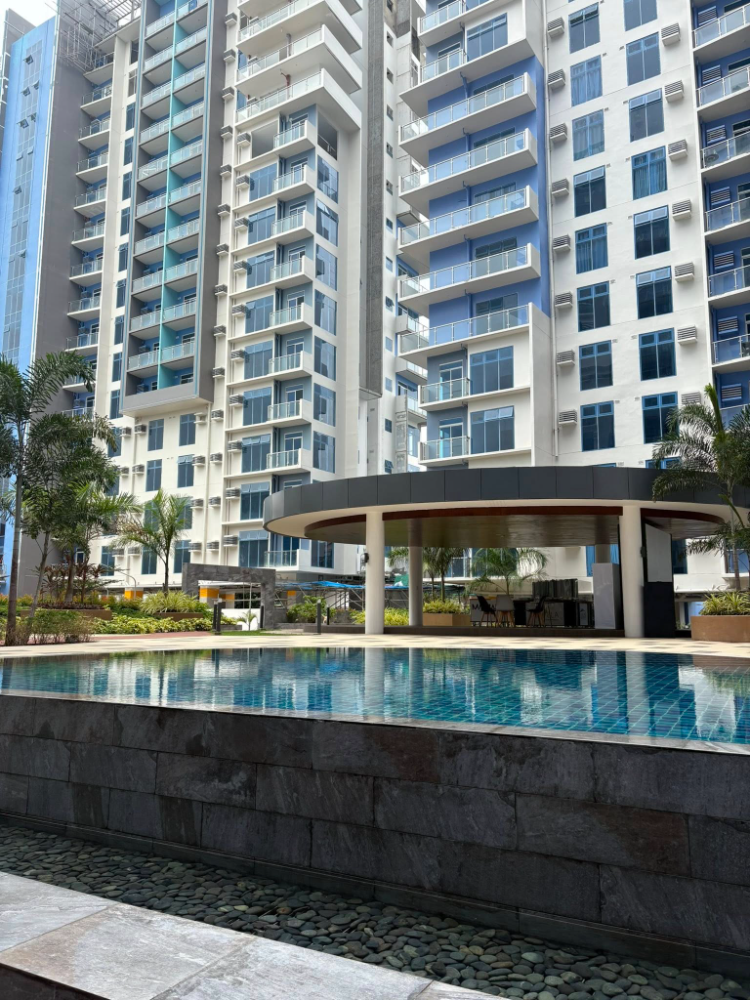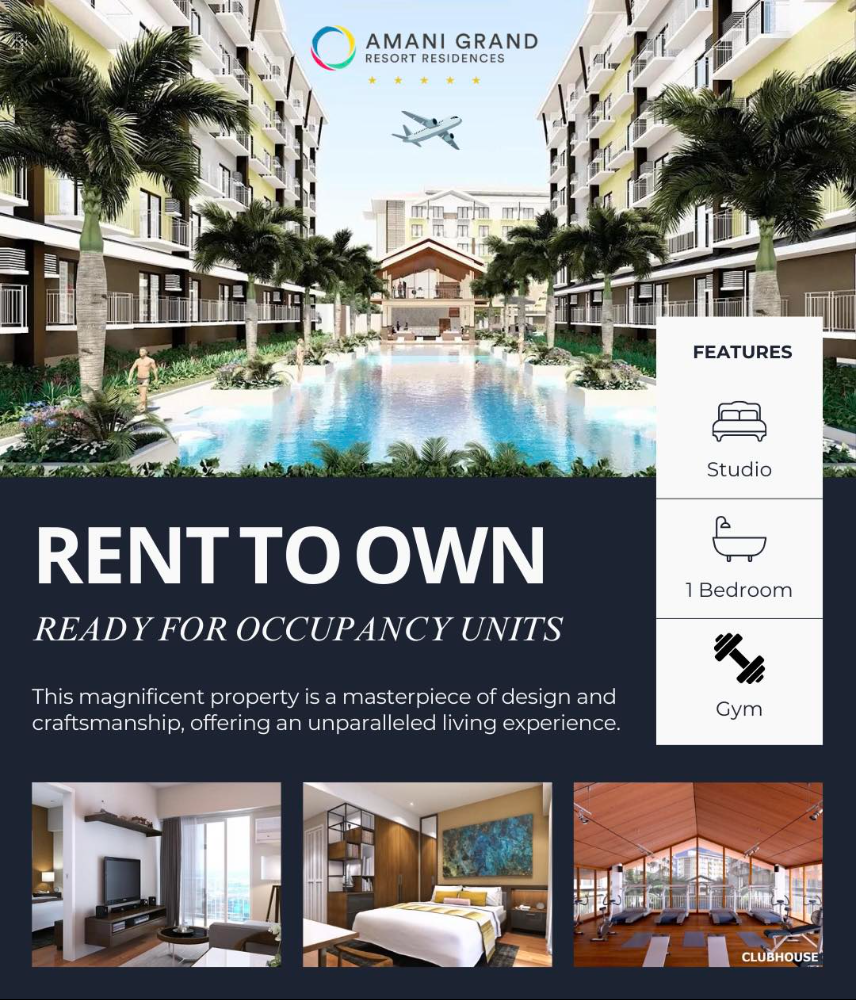
Buying property in the Philippines is a bet on economic and demographic trends. The archipelago is not just Southeast Asia’s second most populous country with over 100 million people. It’s also the region’s fastest growing as of this year.
Investing in Philippines Property: The Ultimate Guide
by Reid Kirchenbauer
Buying property in the Philippines is a bet on economic and demographic trends. The archipelago is not just Southeast Asia’s second most populous country with over 100 million people. It’s also the region’s fastest growing as of this year.
Because of this, the nation will see its economic and political sway rise more than perhaps any of its neighbors. Investors are now flocking to The Philippines to benefit from its expected growth in influence.
Despite negative media attention, mostly related to its drug war, the Philippines has many positive attributes. There are several things which should help its economy rise faster than its competitors in Asia.
First, the Philippines has a rare combination of skilled, English speaking labor and low wages. Multinational firms are able to find English-speaking workers at a lower cost here than almost anywhere else on the planet.
This has led, and will continue to lead, foreign companies choosing to invest in the Philippines over other countries. Especially those looking for tech support and call-center staff, but increasingly everything else.
Vietnam, for example, benefits from its low wages at time when China’s are increasing. But its talent pool is not as wide nor as fluent in English as the Philippines’.
Second, the Philippines receives a very high amount of remittances from abroad. Many English-speaking workers choose to find employment in higher paying countries such as the United States, Malaysia, and Australia.
These overseas foreign workers (OFWs) are successful and able to find better opportunities abroad – mostly because of the factors listed further above. They send money back into the Philippines every month to support their families.
Last year, a whopping US$29 billion dollars was sent from overseas workers into the Philippines. This is no small amount – around 10% of the country’s entire GDP – and helps to significantly boost its economy.
Convergys
Business process outsourcing is one of the country’s fastest growing sectors, with call-center firms like Convergys among its largest foreign investors.
Third, the Philippines is friendly toward foreign investment. This is not only true in the case of foreigners being able to buy property, but also in terms of owning a business, buying stocks, and having the ability to get a long-term visa.
A relative openness gives the nation an edge over neighbors in the region such as Indonesia, Myanmar, and Vietnam.
Of course, the Philippines isn’t without its problems. There’s still tons of inefficiency and corruption in some parts of government. Crime is an issue and has directly harmed GDP growth. There’s extreme cases poverty in Manila, let alone in more rural areas.
None of this necessarily makes it bad to invest in the Philippines. Population growth alone means that in the future, there will be far greater demand in prime neighborhoods. A highly robust economy is just icing on top of the cake.
Can Foreigners Invest in Philippines Real Estate?
Foreigners can own condominium units, apartments, or part of any multistory building. The only limit is that the total number of foreign owned units in one building cannot exceed 40%.
But foreigners cannot own land in the Philippines. They can even own houses – just not the land it’s built on. With that said, there’s a few ways to get around this rule. Some methods are riskier than others.
Land can be leased for up to 50 years, extendable for another 25. Also, land can be bought through a corporation. Companies which hold land can only be up to 40% foreign owned. However, there are ways to structure a company and keep control in practice.
How Much are Property Taxes in the Philippines?
The Philippines has rather high taxes – especially for non-residents. This is one drawback to investing in the country’s real estate market.
Property is subject to an annual tax based on its appraised value. The amount of this tax varies based on the district. But the rate is capped at 1% for properties located within Metro Manila, and 2% for those outside the city.
Rental income is also subject to personal income tax for residents of the Philippines. The highest rate of 32% applies to those making more than 500,000PHP (around US$10,000). If you have enough spare cash to buy foreign property, this probably applies to you.
Deductions for income tax are allowed if you’re a resident. These deductions can be from repairs, maintenance, depreciation, and other taxes which you’ve paid. They can help substantially lower your income tax rate.
For non-residents, income is taxed at a flat rate of 25%. There’s no deductions or allowances if you’re not living in the Philippines for most of the year.
A transfer tax of 6% on the property’s market value is also payable. This is usually split between the buyer and seller.
Is Buying Property in the Philippines Safe?
Believe it or not, the Philippines has one of the best land registry systems in Southeast Asia. Real estate owners can even access their title deed and other information online. As such, you’re unlikely to encounter problems from the government’s side.
There’s several large, well established developers in the country. Businesses such as Megaworld and SM Land have dozens of successful projects under their belts.
Construction and service quality is usually good from these type of firms. Manila even has internationally branded residences such as a Trump Tower and a Westin Residences. These brands don’t just let anyone build a project under their name.
So you won’t have problems buying from respected developers either. Any issues are likely to come from smaller developers. Therefore, it’s important to buy from a well-respected business. Ideally one with at least 10 complete projects and listed on the Philippine stock exchange.
Places to Invest in the Philippines
There’s over 7,000 islands in the Philippines. With a population of over 100 million people, it would be impossible to cover everywhere in the country.
Manila is obviously important as not only the nation’s capital, but one of the largest cities on earth with over 18 million living in the metro. It has many different areas, each with their own prices, vibes, pros, and cons.
Second tier cities like Cebu or Davao are also worth considering for investment. The former is a bit easier to navigate, with Cebu having better access and more facilities wanted by foreigners. Davao is the bigger of the two.
We won’t cover beach resorts or places which don’t yet have much supply of condo buildings. The fact is, most foreigners choose to buy condos in the Philippines. The process involved in “buying” land is too complicated for most – even though it’s where there’s most potential for profit right now.
Plus, you should be buying property in Malaysia if you want land.
Metro Manila
The Metro Manila area is more like a collection of different cities than a single one. Quezon City, Makati, and Taguig are the neighborhoods where most condominiums buildings tend to be.
They’re also the places where most upper class locals and expats choose to live. Multinational companies base themselves in one of these few central business districts. They help drive the Philippine economy.
A middle class has taken form because of these tech giants, support providers, and other firms outsourcing to the Philippines. They, along with everyone else, want to live in a condo closer to work.
However, there are still condos in other less-central parts of Metro Manila. Quezon City is a vast area, and the second largest city in the Philippines after Manila itself. Developers are moving to places like Quezon City to build lower and mid-range projects.
Skip the Next Western Recession
Learn the best places to invest – and where to avoid – by downloading our free Investment Cheat Sheet.
Protect Yourself and Grow Your Wealth
Manila CBD
Manila has rapid population growth. This means there will be greater demand for less space in the future.
Makati
Makati is the financial and commercial center of the Philippines. More international companies are headquartered in the district than any other. Its unrivaled convenience makes the area desirable to expats and locals alike.
As such, it should come as no surprise that real estate prices in the are some of Manila’s most expensive. You’re certainly not reaching anywhere near Singapore or Hong Kong prices. Still, expect to pay in the range of at least $5000 per square meter when buying a condominium unit here.
But investors shouldn’t necessarily write off Makati just because it’s expensive. Remember one of the main reasons why the Philippines has good prospects in the first place?
It’s because of the country’s rapid population growth and urbanization. Prime, centrally-located property should benefit most from these trends in the long run.
Quezon City
A vast area to Manila’s north, Quezon City is starting to be developed as other parts of the metro become too expensive. Prices in Quezon City can be around half or two-thirds those in more central locations.
Despite not being in middle of everything, Quezon City can offer both convenience and value. One of the best places to live in the district is Commonwealth Avenue. The long street extends from Quezon to downtown Manila, making it easy to reach the inner-city.
Eastwood City is also popular. It’s a fully integrated community with over a dozen condo buildings, an IT park, a huge mall, and other retail and commercial businesses. Residents of Eastwood have almost everything they need within walking distance.
Taguig / Bonafacio Global City
The district of Taguig was formerly a fishing community. Now it’s a major commercial and industrial center with a population of over 800,000. Like Quezon City, Taguig’s importance has grown as Makati starts becoming too crowded and pricey for some.
However, one part of Taguig is more notable than the rest of the district. Bonafacio Global City, straddling the southeast border of Makati, is among Manila’s most desirable places to live and work. It’s here where the streets never flood and things are efficient.
Often called “BGC” for short, the neighborhood is a master-planned financial center built and managed by two of the country’s biggest developers. Ayala Land and Evergreen Holdings are in charge of BGC’s planning and construction.
Some analysts even say the area will overtake Makati as the Philippine’s main financial hub in the long run. Ayala and Evergreen seem to understand corporate needs and infrastructure better than most, leading several multinational companies to re-base themselves in BGC. Prices are similarly expensive for right now.
Bonofacio Global City
Bonafacio Global City benefits from its central location and a master-planned, organized approach.
Cebu
Emerging economies often need an industry to help jumpstart its growth. With the exception of oil-rich countries, these sectors are usually tourism, trade, and manufacturing. Cebu just happens to be involved in all three of them.
More than 80% of all ships built in the Philippines are made in Cebu. A lot of furniture, electronics, and toys are also manufactured here. In addition, tourists and retirees are flocking to Cebu in record numbers because of the excellent beaches nearby.
As such, investors should consider buying real estate in smaller cities like Cebu or Davao. They’ll probably have higher returns than Manila over the long-term. Prices are also more reasonable outside the nation’s capital.
One caveat is the lack of choices compared to Manila. Condos in Cebu are just starting to be built – and not all developers are winners. A bit of extra patience and due-diligence is needed.
Davao
Davao is the country’s largest city outside of Manila – and also one of its fastest growing. Its economy grew by an impressive 9.4% in 2016, outpacing the 6.9% rate for the Philippines as a whole.
Investing here is not as easy as in Manila or even Cebu. Nonetheless, Davao’s transformation from an agricultural-based economy toward a service-based one will reward those willing to put in the extra effort.
There aren’t yet too many condos in Davao, but several new projects are under construction. It’s worth noting that some developers have a weak track record and are prone to delays. Make sure you’re dealing with a reputable company when buying property in Davao.
Most development is happening in the city center and on the eastern coast. If you’re somewhat adventurous, want to buy property outside of Manila, and are able to perform due-diligence, Davao might be worth a look.
Real Estate Agents in the Philippines
Property agents are commonly seen and used in the Philippines. This is in contrast to other places in the region where buyers are found based off referrals from family and friends.
Commissions for real estate brokers are high, usually depending on the property’s price and location. The rates vary between 2% and 5%, decreasing as the cost of the property increases.
For example, an agent might list a large mansion for a 2% commission, but they’d charge 5% for a small shophouse apartment. Commissions are payable by the seller.
Several websites help make things easier for buyers and sellers alike. These include RealEstate.ph and Lamudi.com.ph. As a seller, commissions can often be minimized through clever use of online portals.
Is Property in the Philippines a Good Investment?
Real estate values in the Philippines will certainly increase over the long-term, that’s for sure. Strong population growth combined with a resilient economy means that demand for properties in prime locations will rise in the future.
With that said, investors should probably wait for a pullback. Prices for a luxury condo in Makati now rival those of similar apartments in Bangkok or Kuala Lumpur. Both these cities are more developed than Manila while sharing most of its strong points.
Landed property in some areas remains a good investment. However, this isn’t feasible for a lot of buyers. It involves dealing with leaseholds and/or nominee structures. The cost and effort is usually just too great.
For most people, your best option is to wait for a pullback in the market. Either that or buy property in a country growing just as fast but with more reasonable prices. Real estate in the Philippines is simply too expensive compared to its neighbors and stage of development.
About Reid Kirchenbauer
Reid Kirchenbauer is the Founder of InvestAsian. He’s an accomplished stock trader and property investor in Thailand, Cambodia, and many other places. He’s been featured in publications such as Forbes, Nomad Capitalist, Property Report, and Seeking Alpha.https://www.investasian.com/2017/06/04/investing-in-philippines/


























